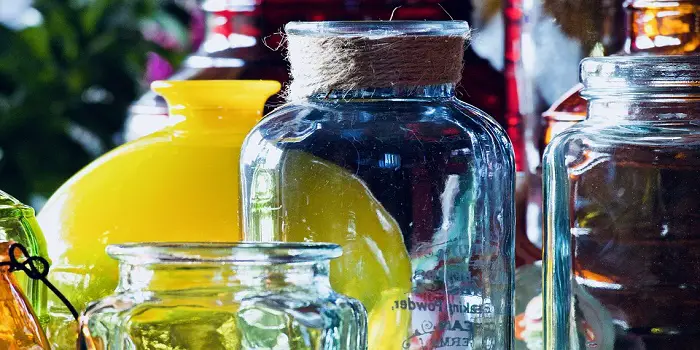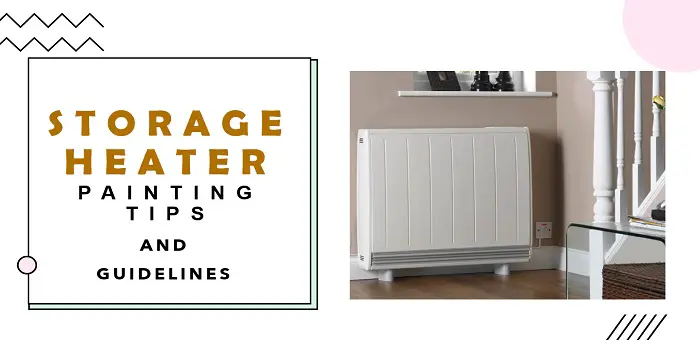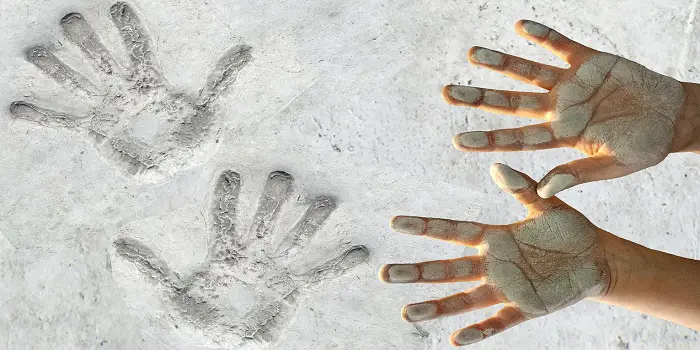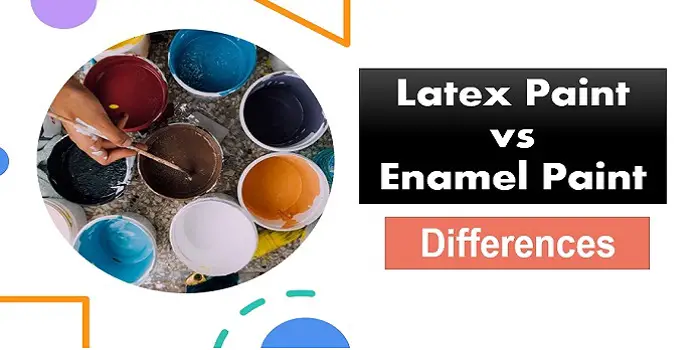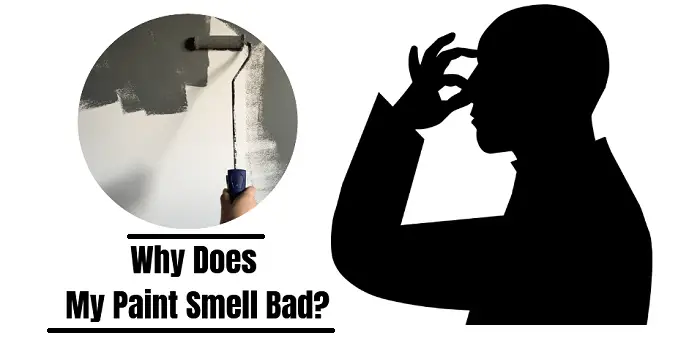
Smelly paints and unpleasant odor, after you have just painted your home can be notorious.
No matter what kind of paint you use and what part of your home you paint, there can be some level of “freshly painted” odor left that you have to deal with.
Most of the time, these paint smells can be due to VOCs (Volatile Organic Compounds), which come from the materials that are used to manufacture oil-based and latex-based paints.
But many times, there can be more to it.
And this is when people complain about their paints smelling like cat pee, rotten eggs, ammonia, or dirty feet.
The growth of bacteria in an old paint bucket is one of the most obvious reasons why paints can smell like bad eggs, pet urine, or ammonia.
This smell can be as strong as hydrogen sulfide, which usually comes from sewage.
And the worst thing is that prolonged exposure to such a bad smell can cause issues like headaches, fatigue, and dizziness.
Experts across the paint industry believe bacteria can grow over time in an old paint bucket and release hydrogen sulfide gas if not stored properly.
And this is usually the problem that turns the old paint odorous, especially the latex ones that contain high levels of water.
What's Here in the Article:
What Makes Paint Smell Bad?
Turns out there are many good reasons for these paints that can turn the wall paints to smell like hell.
While most paints possess a smell like a familiar strong paint odor, there can be paints that produce an unbearable foul smell like rotten eggs for a long.
Few reasons that make the paint smelly are:
1- VOCs
As stated above, the bad paint smell is generally due to the paint’s VOC level.
Volatile organic compounds like formaldehyde can be relatively high for solvent-based oil paints compared to water-based latex paints.
After you have painted the walls or ceilings in the room, the odor gets strong as the thinner solvents in the paint get evaporate into the air.
This is the reason why wet paints smell stronger than dried paints on the surface.
The evaporation process is generally referred to as ‘gassing off and may last to about a few weeks depending on the thinning agents and quality of paint you have used.
Meanwhile, you can try different ways to get rid of the paint smell on walls naturally.
Trying these methods may expedite the process and make your home ready sooner.
2- Surface
The surface you are painting on can be a reason why the paint smells bad or fresh.
Also, it will depend on the polishes or wood paints you use.
Certain wood surfaces you paint, for example, will generally produce a fresh, natural smell that is not so hard and repelling.
In rare cases, if you have painted porous walls (or the walls are exposed to excessive heat or direct sunlight), there can be an ammonia-type odor you can feel.
In many other cases, there can be earthy or musty odors on an already painted old wall if it’s susceptible to an attack by fungi and blue-green algae due to moisture or humidity.
3- Cheap Quality Paints
Non-branded cheaper quality paints, primers, and thinners contain ingredients that can produce a strong, pungent smell, almost like soured milk.
IMO, these cheap paints are meant for nothing more than that.
These lower-quality paints usually contain lots of water and fewer paint pigments and other good stuff that should be present in the paint.
The more water the paint will have, the quicker it can turn smelly due to bacterial growth.
So, it’s good to avoid such cheaper varieties and only go for popular brands like Kilz, Benjamin Moore, Sherwin-Williams, etc.
Some of these brands also manufacture 100% VOC-free paints that are also anti-bacterial.
You can try them along with putting the coats of alkaline sealer as it will work to seal in the bad smells and will avoid molds and bacterial growth.

Are There Paints That Doesn’t Smell?
After working with so many paint brands and varieties, I can say there are many available in the market that will not go bad very easily to smell like decaying or decomposing eggs.
All you need is to ask for them and get the right product you desire.
Some of the best non-toxic paints that don’t smell so strong (or have very little odor) are:
- Benjamin Moore Aura
- Old Fashioned Milk Paint
- Sherwin-Williams Harmony Interior Acrylic Latex Paint
- Green Planet Paints
- Clare Paint
All of these Zero VOC paints come with a very low odor.
Plus, they are also easy to apply and mildew resistant.
Varieties such as Green Planet Paints are manufactured from natural plant oils and they are known for their mineral-based formulas that don’t hurt the environment.
Clare paints also have zero colorants, and are Greenguard Gold certified.
This means they are tested and verified to meet all the highest standards for low chemical emissions.
Few other brands that manufacture Zero VOCs and low-odor paints include BACKDROP, AFM Safecoat, and Earthborn Paint.
What is the Difference Between Low-VOC and No VOC?
The basic difference between the Low-VOC and No VOC lies in the number of volatile compounds they contain.
Paints labeled “Low-VOC” should contain less than 50 grams per liter of VOCs.
Paints labeled “Zero-VOC” should contain less than 5 grams per liter of VOCs.
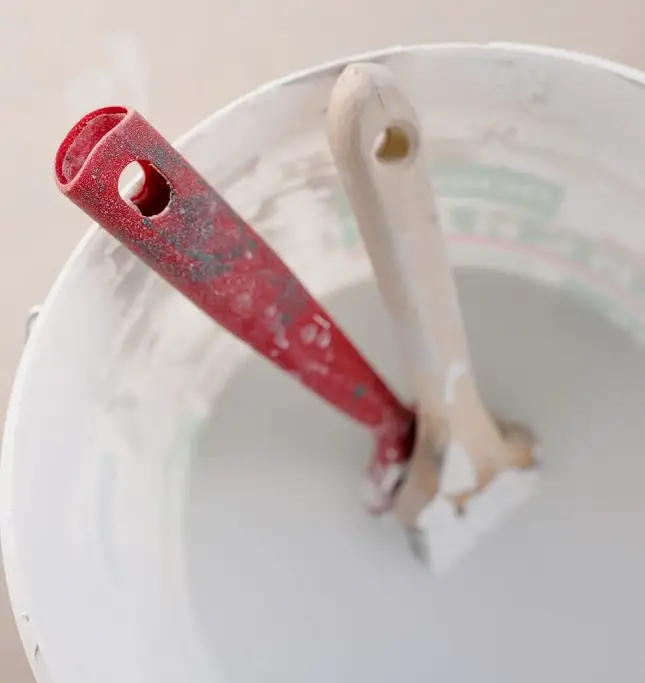
How to Tell if My House Paint has Gone Bad?
Just that your paint has developed a funny color and smells like rotten eggs does not mean it has gone off.
Before throwing the stuffed paint away, just confirm if it’s still usable and if you can still use it with some variations.
Usually, the paint cans or drums, when opened and left for a few months, will start forming different layers.
The heavier solids in the paint (that make up the main ingredients) generally sit at the bottom.
And the solvent that is meant to carry the solid stuff settles upon the top of the tin.
In a similar fashion, tints (that are meant to provide colors) also get separated and make the paint appear different color than they usually are.
Many of these dead paints can come back to life and can still be used simply by stirring for a few minutes.
They may smell bad, but you will be OK with them if you just want some of them for doing minor touch-ups.
If, however, the settled paint doesn’t stir well, contains rust particles due to build-up on the tin, or appears to be a solid tar-like material that is hard to mix – it has most likely gone off.
You will need to buy a new one for your use.
Does paint have an expiry date? Although you may not find an actual expiration date on the paint package, house paints do expire if kept for very long. But when will they get expired will practically depend on the type of paint you are storing, the condition you are storing in, and what is their shelf life?
What Can Happen if You Use Old Paint On Your Walls?
On average solvent-based paints come with a shelf life of around 15 years.
Latex paints have a shelf life of about ten years.
Unopened cans of paint can last even longer when stored correctly under moderate climatic conditions.
If the paint can is unopened, it’s most likely unused and in a usable state.
After opening the can, even if you find a “skin” formed on the paint’s surface, you can remove it carefully, stir the paint, and use it without any problem.
But remember, if lumps are seen in the paint, it’s no longer usable – you should avoid using such paint.
It’s good to discard and dispose of this type of old paint according to the local guidelines of your area.
If you choose to use this old paint on your walls or ceilings, it may peel off very fast making all your efforts go wasted.
Plus, old paints that go bad can also emit a very high level of dangerous fumes that can make you sick.
While the fumes from any such latex or enamel paint are not so strong as to poison the body, they can irritate the eyes, nose, and throat of your family members very easily.
Especially if there are small children or elders in your home, it can cause conditions like nausea, headaches, dizziness, and many other breathing problems.

Ways to Get Rid of Bad Paint Smell on Your Walls Naturally
Whether you are touching up a few spots or painting all the walls, one aspect of painting that no one looks forward to is the smell.
The fumes generated by paint can last for days even if you ventilate the area thoroughly. For oil-based paints, the odor can be even stronger and last longer.
What follows are nine tips that will help you rid the air of fumes faster, so you can enjoy your new paint job without the unpleasant smell.
1- Baking Soda
That box of baking soda is in your refrigerator for a reason.
Baking soda naturally reduces odors which means that it is perfect for also eliminating paint fumes.
Put a little baking soda in several small dishes around the room.
Or if you have carpeting, you can simply sprinkle it over the carpet and let it sit.
The baking soda will absorb the fumes, and then you can simply vacuum it up from the carpet.
2- Fan
A good, cheap box fan may be one of the best and easiest solutions to your apartment’s paint fume smell issues.
Simply place the fan in an open window, make sure it is pointing outside, open another window on the opposite side of the room if possible, and then turn on the fan.
This will suck out the paint fumes and help the paint to dry even faster.
3- Grounds from Coffee
If you like the smell of coffee, then this tip may be for you.
Instead of tossing out the grounds after you have made a pot of coffee, place them in a few small bowls and put them around the room in which you have painted.
The aroma from the grounds will absorb the smell generated by the paint as well as thinner fumes rather quickly.
While you will need to enjoy the scent generated by the coffee grounds, that is a better alternative for most people than the paint.
4- Lemon with Water
Toss some lemon slices into a bucket of water and place it in a room.
Depending on the size of the room, you may want to place a few smaller containers to take the rancid smell away.
If you add a little salt to the water, the lemon will absorb the fumes at a greater rate.
If you do not have any lemon peels, you may try mixing lemon juice instead.
That will keep you from having to peel any lemons.
5- Onions
This may seem counter-intuitive as the concentrated odor generated by onions will tear up the eyes.
However, when you cut a medium to large size onion in half, you can place each piece on opposite sides of the room on a small dish with the cut side face up.
The odor generated by the onion may be noticeable, but it does not tear up the eyes.
What it will do is absorb the paint fumes relatively quickly.
6- Scented Candles
A rather obvious solution is to place a couple of scented candles in the room.
These especially work great for the bathroom, just in case you have freshly painted it and want to remove the odor.
Keep in mind that the candles work because the wax absorbs the odors, so you can go with standard candles if you desire.
Plus, there are candles that are specifically made to absorb unwanted odors, which include paint fumes. You can go for them either.
Remember not to use paraffin-based candles as they can emit more toxins into the air.
Instead, you can use soy-based or natural beeswax candles that are safe and natural to breathe.
Just make sure that the candles do not cause a fire hazard in your home.
You can do this by placing the candle in a bowl that has a small amount of water.
7- Vinegar with Water
Vinegar has an odor all its own, but white vinegar may be one of the best and certainly least expensive of all-natural products that absorb the smell of epoxy paint.
Mix equal parts of white vinegar and water and place them in several containers.
While white vinegar does have its own odor, it does not stay for long once you have opened the windows.
8- Charcoal
You already know that deactivated charcoal acts as an excellent odor-absorber.
Irrespective of what kind of smell it is, you can get it to eliminate the odor and feel the fresh air around.
This is available either as small pouches or as a crushed formula.
You can buy and place them in several bowls or saucers around your freshly painted walls to absorb the bad smell quickly.
9- Natural Extracts
This is my favorite paint odor remover method and hopefully, you will like it too.
For homeowners who are really allergic to a bad smell, I usually add a drop (or two) of natural extracts like vanilla or peppermint into a paint can.
If you want you can simply place a few drops of these natural extracts on the cotton balls.
Place these balls in a small bowl and keep them near to the smelly walls.
These extracts will automatically lessen the odor and make your room feel refreshed very quickly.
A Few Additional Tips and Ideas to Avoid the Paint Fumes Altogether
IMO if you take certain precautions (before you start with your project), it’s easy to prevent the paint, primer, and thinner fumes from coming.
Plus, it will make the process less time-consuming and a bit easier for you.
a) Check the Weather
Before starting your paint project, check the weather forecast.
You should avoid painting on days when the humidity in the air is high.
If you paint on high humidity days, most likely, the paint will require a longer time to dry.
Plus, it will emit a stronger odor that can get trapped in soft materials, clothing, carpet, and upholstery.
b) Choose the Right Paint
While buying an oil-based paint or primer, pick the ones that are labeled “low odor,” “smell-less,” or maybe “scented wall paint.”
While it’s good to pick low or zero VOC (volatile organic compounds) paint products, you can consider even better options such as milk paints, chalk paints, clay paints, etc.
Also, use eco-friendly thinners for thinning the paints as it emits very little odor.
c) Allow Enough Drying Time
Walls that are still wet can trap the fumes faster and will emit toxic gases for a longer period of time.
So, it’s crucial that you let the walls and other surfaces dry completely before you apply the next layer of paint or primer coat.
d) Keep the Paint Materials Covered
When not in use, it’s good to keep your paintbrushes, rollers, trays, and paint cans covered.
This will keep the paint smell and fumes from getting scattered around the room.
e) Keep the Doors and Windows Open
Keeping the room properly ventilated is important if you want to prevent the smelly fumes from dissipating into the air.
Remember you should only keep the doors and windows open in the room where you are painting or stripping the paint.
You should keep the other rooms closed to avoid the smell from spreading into the whole house.
Combine Different Tips and Achieve Faster Results…
Remember that all these tips will take an hour or longer to eliminate the bad paint smell on the freshly painted walls, ceilings, or furniture.
With the exception of fans and candles which do not go together for obvious reasons, you can combine virtually any other method and get rid of the paint odors even faster.
The most obvious is the fan and the other products besides the candles, which will help clear away the paint fumes from your room or apartment.
However, baking soda and any other solution, such as vinegar or lemon and water will certainly work.
Final Thoughts
When choosing paints, most of us look at the colors and nothing else.
However, besides looking at the right paint shades, it’s important to check the number of volatile organic compounds (VOCs) it contains.
Also, consider checking how old is the paint can and whether it’s a sealed pack or has already been opened any time before.
All these factors will together decide how smelly your paint turns out to be when you apply them to your walls.
Share the post "Why Does My Paint Smell Like Rotten Eggs?"

Douglas Becker (aka Painter Doug) has over twenty years of experience as a painter in Adkins, Texas. At present, he resides in Florida with his family.
From painting multi-storeyed houses, condos, and apartments to large commercial buildings and small offices, he had served various customers in areas not only in Adkins but also in Southwest Florida, Sarasota, Naples, and many more. To know more about him check here.

